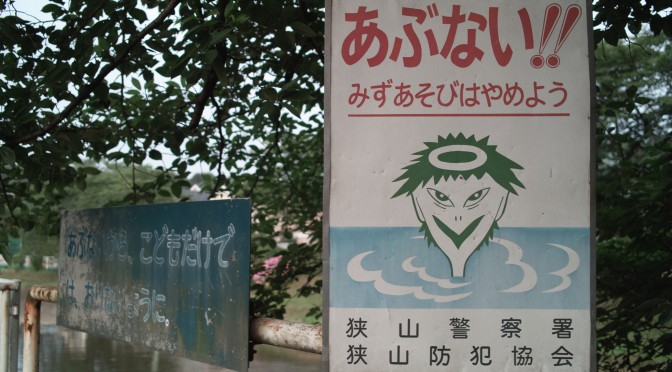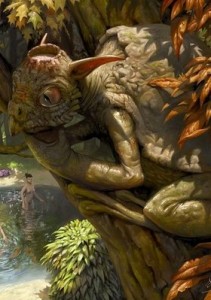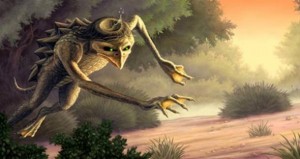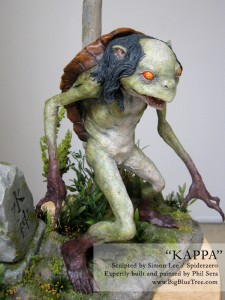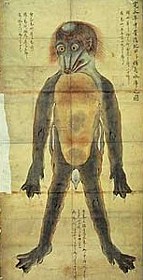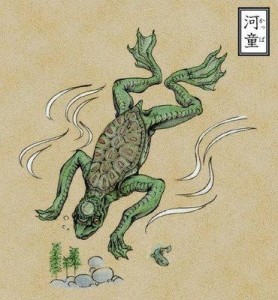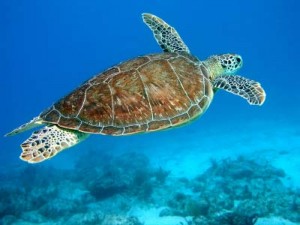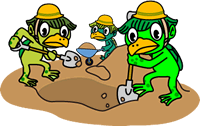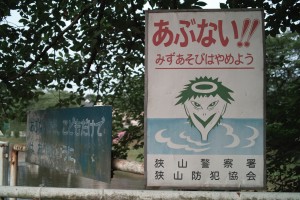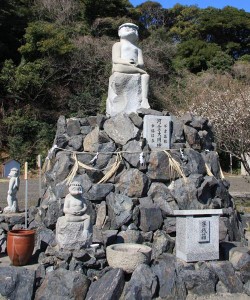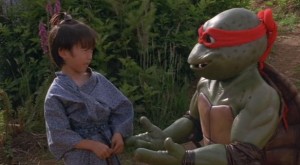In the Alters’ World (and the series of books found here), creatures of legend reveal themselves to the world. Born through genetic abnormalities, defects and mutations, the Alters have lived for centuries as outcasts of human society, hiding their true nature from the world while colorful stories have been written by many to describe what they’ve seen. How are these creatures different from what was described in the stories? What relationship do they have with humanity? Every entry of the Alterpedia will delve into a new creature from around the world. This week we cover:
Kappa
Small, turtle-like and mischievous, Kappa are said to roam the waters of Japan and remain hidden in the depths, awaiting those who would stray too close to the waterfront. Long used as a story to warn children of the dangers of going too near to the water, Kappa have long been blamed for drownings and mishaps on or near ponds, rivers, and the sea. Ruling the waters, swimming naturally like a fish and holding a deep connection to it – to the point of needing those very waters to survive, they are incredibly territorial. Images of them have been created throughout the centuries, depicting them tormenting humans who stray too close to their territory.
But what are the Kappa? Why do people believe them to be so malicious and how is it they came to represent all the dangers lurking within the waters?
Are they really demons, or are they something else?
Appearance
Mythology
Kappa appearances are described slightly differently depending on the region of the country you’re in. These variations are slight, however, and several features are known to be common across multiple regions. First, they are commonly described as being the height of a child, often about the size of the children most likely to be warned of the little creatures. They always have webbed hands and feet and skin resembling that of a reptile or amphibian, being adept swimmers and adapted to their environment. This skin is often in shades of yellow, green, or blue, much like the animals they appear to be. Along with this aquatic appearance, they will also often bear the odor of fish, either through their own scent or the various materials that have stuck to them as they emerged from the depths.
They are often described as being very turtle-like, with shells and beaks resembling those you would find on a typical sea turtle. The shells may at times be small enough to be unnoticeable from some angles, but other descriptions have a full body shell much like the turtles they’re compared to. When these shells are full sized it is often described that their limbs can be retracted within the shell or even slide all the way through the center of the torso entirely, allowing one arm to become longer as the joined arms slide through the center like a long rod.
However, the most distinctive trait of Kappa has to be the “sara” – a bowl or plate which is formed atop their head in a place with no hair or scales. This structure is said to be the source of their mystical power, a vessel to contain the waters of their native river as they travel the land. It is always full, and any loss of the water will generally cause the Kappa great harm. If this bowl were ever empty, it would render the Kappa unable to move until being returned to their source of water. As such, at times when they intend to be out of the water for long, a lid may be placed over the top of the bowl to keep the water inside – preventing any potential loss.
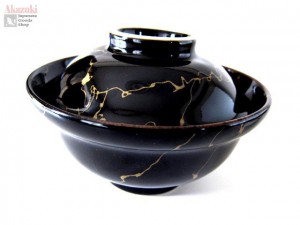
Alters
Unlike many of the more inhuman Alters, the descriptions of Kappa are quite accurate to the creature they describe. As descendants of the ancient Homo floresiensis species of South-East Asia, the Kappa are naturally diminutive in size, not often much larger than children. Many of their features from there are adaptations that have happened over a long period of time as the once “Hobbit”-like entities became well suited to their aquatic environment as the previous Ice Age came to a close and the “Sundaland” continental shelf was flooded as a result.
Their skin has adapted primarily for living in aquatic environments, favoring more fish-like and reptilian traits rather than the mammalian traits of their ancestors. Because of this, from a distance, it is easy to mistake a Kappa for a sea turtle, small crocodile, or large salamander. Originally their adaptations were subtle, webbed feet and hands being a common mutation but often not too peculiar, until ritual body modification began making long term changes to them. As a result of the body modifications, like the First Ones of Africa, the Kappa slowly adapted the beak, shell, skin, and bowl depicted in lore.
The bowl is made of cartilage fused to the top of their skulls and serves a dual purposes to the Kappa people. During their travels across water, the need to keep things dry was a major concern for the earliest specimen. These earlier villagers selectively adapted the bowl shape to the top of their heads, seeing as the containers they would normally travel with could slip off in rougher seas. Utilizing this bowl, they were able to place things on their head securely and keep it above the surface while traveling. These things could be items such as fruit, tools, or materials that would be ruined by contact with water.
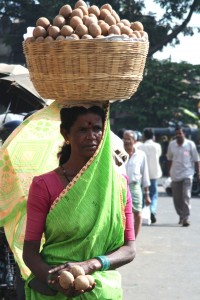
However, more importantly for the race is the ability to hold water in it as they travel on land. As a result of their adaptations to the water source, Kappa no longer sweat and are limited in their ability to walk on land for long periods of time. Body temperature is a major issue and must be constantly maintained. To do so, the Kappa have two prominent methods of keeping themselves cool. First, the bowl can be filled with water, cooling the Kappa much like sweat would normally. Additionally, they may cover themselves in moist sludge from the water, keeping moisture close to their skin and providing insulation while also, unfortunately, producing the distinctive fish-like smell often attributed to them.
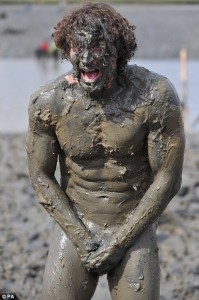
Talents
Mythology
In terms of talents, the skills of a Kappa are relatively mundane compared to many other creatures of mythology. The Kappa tends to have no great deal of magical or spiritual power, unlike many other Yokai, and rely primarily on their physical attributes and knowledge. One skill they do possess which is mystical in nature is their ability to remove the soul of a victim in a ball form from the anus of the victims, much like an anal bead of the soul.

However, peculiar as that may be as a talent to have, the rest of the abilities of Kappa are well within the reach of mortal creatures. They are particularly adept at swimming, wrestling, and trickery – utilizing their fantastic skills to lure people close to the water front and then wrestle them into the water through sheer physical force. Once in the water, the hopes of defeating a Kappa are completely gone, as their combined ability of grappling and swimming make them a formidable opponent.
In terms of knowledge, the Kappa have very in depth knowledge of agriculture, water management, and medicine. The Kappa are known to be familiar with irrigation, in particular, and many who have gotten the aid of a Kappa in the past have put them to the task of irrigating their crops. Meanwhile, their knowledge of medicine has made them important sources of information for the cure to many ailments according to legend, the most commonly cited example being the teaching of bone setting.
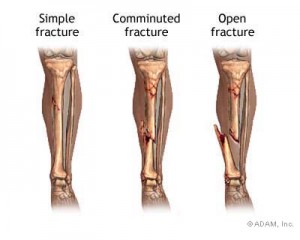
Alters
Once again, the legends are mostly accurate. The Kappa culture prides itself on passing down several key skills from one generation to the next. While they have tremendous ability to swim and are able to hold their breath for great deals of time, they still require land for several things – particularly the growing of cucumbers. Having been forced to live on scraps of land to survive the flooding of the Sunda continental shelf, the Kappa have become experts of not only maintaining control over what land they have but making the best use of it. Their skill at irrigation is particularly useful in maintaining fresh water on small islands where such water may be limited to only a few sources and not generally enough to handle traditional agriculture.
The Kappa are particularly intelligent for “Hobbit” descendants, many speaking multiple languages, including Japanese and an obscure Sino-Tibetan dialect only spoken by inhabitants of “Mu” and a few isolated civilizations such as the Yeti. Because of their keen intellect, however, their mastery of using plants they have found on various islands and under the sea have made them skilled at curing diseases and symptoms of injury, a skill which they are likely to offer to others they may encounter.
Meanwhile, due to the limited landmass of Kappa territory, their skills in grappling were particularly honed to combat each other. Kappa conflicts generally happen on shore fronts or over open water where the ability to grapple is important to either throw your foe off your land or hold them under water during conflict. Weapons have little value to them, as their shells are often durable enough to avoid being pierced by most objects and limbs can be pulled in for protection if needed. As such, almost all Kappa conflicts are purely settled by grappling ability and this skill translates well when they encounter humans. The Kappa grappling technique is purported to be superior to even some of the greatest human sumo wrestlers, despite their size.
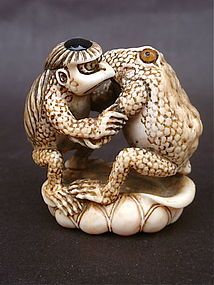
Behavior
Mythology
Kappa are tricksters known to be fairly malicious towards humans and often a severe threat to human life. It’s reported that they are known to lure people towards the edge of the water and then wrestle them in, where they will drown the person and begin to devour them. This is particularly true of children, who the Kappa prefer the taste of and wish to devour whole – including their soul. This behavior is so common in the stories that signs still warn of this possibility to this day to assure that children do not wander too close to the water unattended.
However, one thing that is well known about the Kappa is that, despite their man-eating ways, they are incredibly honor bound. A Kappa would rather die than break a vow or be perceived as rude, even bowing when such an action could render them immobile by spilling the water from their bowls. A Kappa who owes a debt to a human will do anything asked of them as if their very lives depended on it. Ways to gain this favor with them include – returning them to the water, returning their arms to their proper places (as they may sometimes slip out), or offering them gifts. Among these gifts, one of the best is cucumbers, which is said to be the only food Kappa enjoy more than children.
Their honor also makes them incredibly competitive, readily accepting challenges from humans in almost any field or task. These challenges will typically hold a wager, and the Kappa is honor-bound to accept the results regardless of how it may fall. This means that, even if it is a challenge they could not possibly win, a Kappa will not reject the outcome. Because of this, despite their notoriety for being malevolent tricksters, it is actually fairly easy to trick them into completing tasks for a human.
However, not all Kappa need to be tricked. Many are curious about humans and are willing to learn more about human civilization. Most Kappa to speak Japanese did so out of curiosity alone, and will often befriend humans for a simple exchange of gifts. Once good friends, Kappa are loyal and incredibly helpful, despite behaviors traditionally associated with their people.
Alters
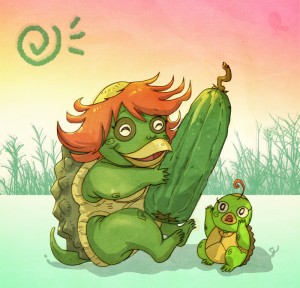
Kappa are not man-eaters. Rather, many conflicts had with humans are entirely due to misunderstanding and territorial dispute. The Kappa, for the most part, see the waters as their domain and think anyone approaching the water front are the aggressors in the situation. Once this happens, the natural tendency is to wrestle the aggressors into the water and deal with them there. For humans, this encounter can prove fatal.
These encounters are rare, however, as the Kappa are intelligent and often realize the differences between their society and that of the neighboring humans. What few encounters have turned sour, however, were used by Japanese parents to prevent their children from accidentally drowning, warning the children that the Kappa could be responsible for it. In truth, most Kappa recognize human children as completely harmless and are more likely to assist these children than harm them.
The stories of their honor are quite accurate, however, and Kappa society holds one’s vow with great importance. A Kappa that breaks its word is considered an outcast within Kappa society, and any slight against another is generally seen as shameful to the entire family. Because of this, many Kappa will do whatever it takes to repay a debt and will often go beyond simple repayment in order to appease their code of honor.
As such, while their image in Japan may be more malevolent in nature, many Kappa are actually quite friendly to those they encounter. Sometimes they may even be enamored with the culture of their neighbors. However, despite this, due to the stigma associated with their kind…
Interactions are still a bit odd.
(I write novels and have a twitter account. You’re honor bound to check out at least one of them.)


